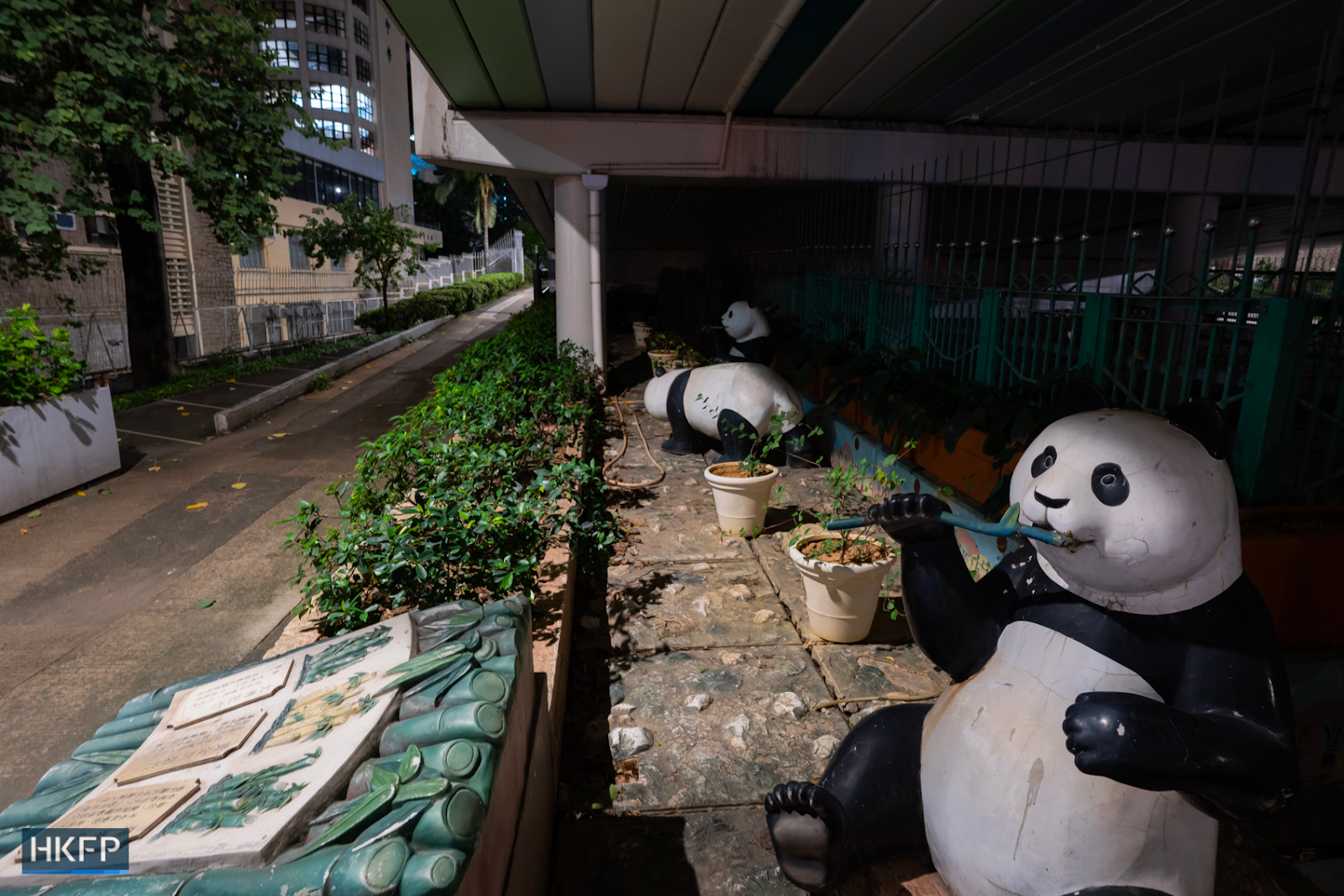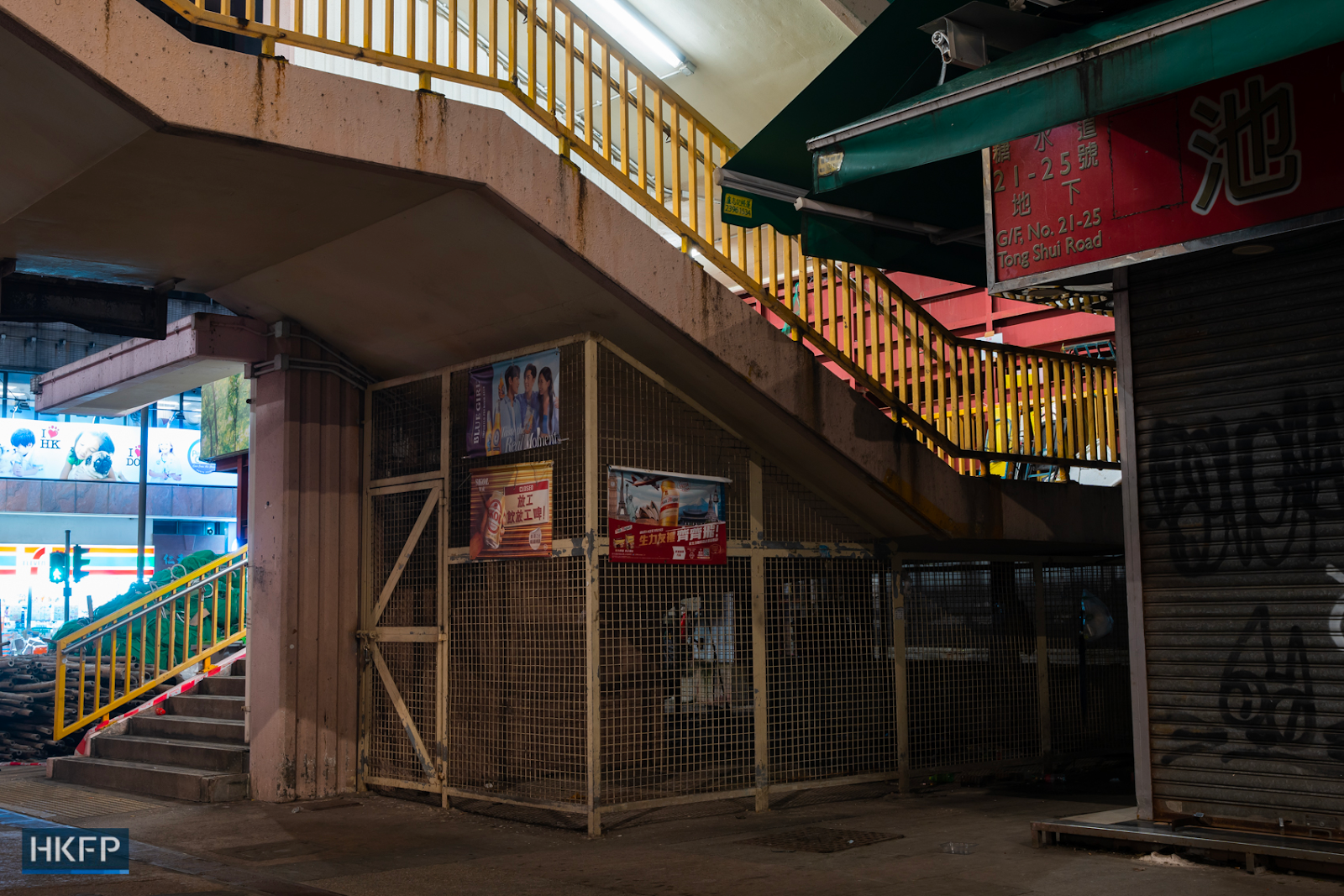In Pictures: Hong Kong’s hostile architecture designed to keep homelessness off the streets
Hong Kong’s streets have become increasingly inhospitable to its homeless population, with barricades adding to existing hostile architecture to limit the number of places people are able to find shelter.
For street sleepers in Hong Kong, places that once offered shelter and perhaps a little privacy have become increasingly inhospitable.
A man sleeps in an underpass near barricades installed by the government on July 21, 2023. Photo: Kyle Lam/HKFP.
In July, five homeless people petitioned outside the government headquarters, lobbying against recently implemented blockades of a number of popular sleeping sites in the city. They were joined by five lawmakers ahead of a meeting to discuss policies on homelessness in the legislature.
Speaking during that meeting, Warner Cheuk, deputy chief secretary for administration, said: “While the homeless might view these items as their belongings, ordinary people consider them to be litter.”
Plant installations under a bridge in Hong Kong on July 22, 2023. Photo: Kyle Lam/HKFP.
According to government statistics, there were 595 street sleepers in 2013 according to the Social Welfare Department. By 2022, the number had risen to 1,582.
The number of places in shelters, however, has not kept pace with the rising population of street sleepers. In 2013, there were 202 places in homeless shelters provided by NGOs funded by the government, while in 2023, there were 228, an increase of 12.8 per cent.
Animal structures installed under a bridge in Hong Kong, on October 11, 2023. Photo: Kyle Lam/HKFP.
In recent months, locations commonly used by Hong Kong’s street sleepers, such as footbridges and underpasses have been blockaded by authorities. Some fences are accompanied by notices indicating that the government will remove all items in the area without prior notification, deviating from the previous practice of allowing a 24-hour notice period for owners to reclaim their belongings.
Ng Wai-tung, community organiser at NGO the Society for Community Organisation, told HKFP in July: “This is not a new thing for the government to build barricades or fences to banish homeless people, in fact most of the homeless just need a hidden place to avoid pedestrians.”
Gate and fences installed under a foot bridge in Hong Kong, on July 21, 2023. Photo: Kyle Lam/HKFP.
Over the years, the government has resorted to various forms of hostile architecture, ranging from plastic fences and concrete spikes to plant installations and peculiar animal structures, in an attempt to discourage and displace the city’s homeless population.
As a result, some of the homeless individuals have relocated to darker and more secluded areas, while others have simply moved their belongings next to the fences or obstacles, continuing to struggle with poverty, illness, and loneliness.
A tent set up in a subway, with barricades near its entrance, in Hong Kong, on September 5, 2023. Photo: Kyle Lam/HKFP.
Concrete bollards beneath a Hong Kong bridge, on October 11, 2023. Photo: Kyle Lam/HKFP.
A tent beside a footbridge with fences in Hong Kong, on September 5, 2023. Photo: Kyle Lam/HKFP.
Planters and concrete spikes under a bridge in Hong Kong, on July 22, 2023. Photo: Kyle Lam/HKFP.

Animal structures installed under a bridge in Hong Kong, on October 11, 2023. Photo: Kyle Lam/HKFP.
Boulders installed under a bridge in Hong Kong, on October 11, 2023. Photo: Kyle Lam/HKFP.
This article was originally published on Hong Kong Free Press. Its inclusion on this website is solely for education purposes.













No comments
Share your thoughts! Tell us your name and class for a gift (: